The developer of an agricultural condominium property regime at Marconi Point on Oʻahu’s North Shore is fighting in federal court to avoid having to obtain a Special Management Area permit. At the same, time members of the public — including a state legislator — have ramped up their calls for greater scrutiny of activities there.
Those activities have included the building of an iron fence that contributed to the recent death of a federally protected Laysan albatross, resulted in the abandonment of albatross eggs, and is currently interfering with their nesting activities. They also include the unauthorized clearing of acres of coastal habitat for those and other birds, as well as the endangered Hawaiian yellow-faced bee. And then there’s the damages last December to a building listed as part of a state and national historic site, the alleged use of agricultural warehouses for non-agricultural, commercial purposes, and the construction without permits of “barns” and “storage sheds” being used as living quarters. The list goes on.
Several of these concerns are being investigated at various levels of government. In response to one couple’s complaints, two companies associated with the developer have filed a lawsuit seeking to bar them from sharing their concerns about the goings-on at Marconi Point with government agencies and a declaration that their agricultural warehouses can stay.
The dust is far from settled on the issues surrounding Marconi Point. Whether and when fines or orders to remove structures are ever issued remains to be seen.
Blitzed
“Whatever mitigations the Fish and Wildlife Service wants, we will employ.”
That’s what consultant Mark Howland said at the May 2022 meeting of the Koʻolau Loa Neighborhood board with regard to the farm dwelling his client, Yue-Sai Kan, proposed to build on her oceanfront CPR lot at Marconi Point.
But it’s what she’s already built — an impenetrable, point-tipped iron fence where Laysan albatross nest — that has caused the most concern and prompted a recent flurry of letters to government agencies.
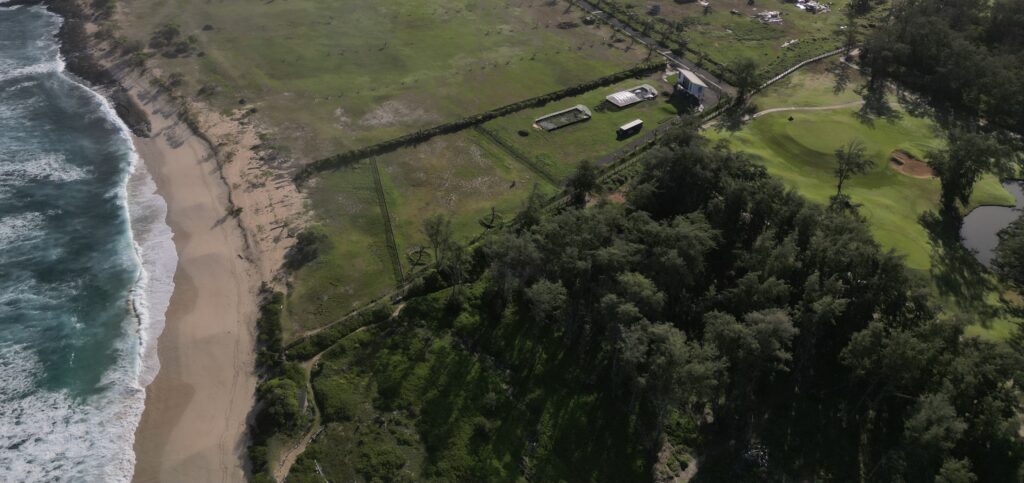
A nesting female albatross named Hoʻokipa was apparently intentionally killed last December after she got caught in the fence while defending her egg from Kan’s landscapers. An autopsy revealed she died from blunt force trauma to the head.
What’s more, albatross pairs that have returned to the area to nest are often caught on opposite sides of the fence, resulting in abandoned eggs.
On January 9, the community group Koʻolau Waialua Alliance wrote to Department of Land and Natural Resources chair Dawn Chang and the heads of the department’s Division of Forestry and Wildlife, its Oʻahu district manager, and the department’s Office of Conservation and Coastal Lands, asking that “full enforcement action be taken to protect current essential and future recovery habitat for endangered Hawaiian yellow-faced bees, Laysan albatross, threatened green sea turtles, and endangered Hawaiian monk seals at the Marconi property.”
The group also urged them to bring an enforcement action regarding Hoʻokipa’s death.
“We ask that DLNR (1) impose maximum penalties for these violations, (2) prohibit all further work that would affect the essential habitat for these species, (3) require the owners to completely restore all degraded habitat for these species within two months in coordination with DLNR and USFWS/NOAA, (4) remove the unpermitted structures, especially the iron fence on Yue-sai Kan’s property and (5) install appropriate symbolic fencing and educational ‘keep your distance guidance’ signs (for all landowners/tenants and the public using the beach) to prevent future degradation of these habitats.”
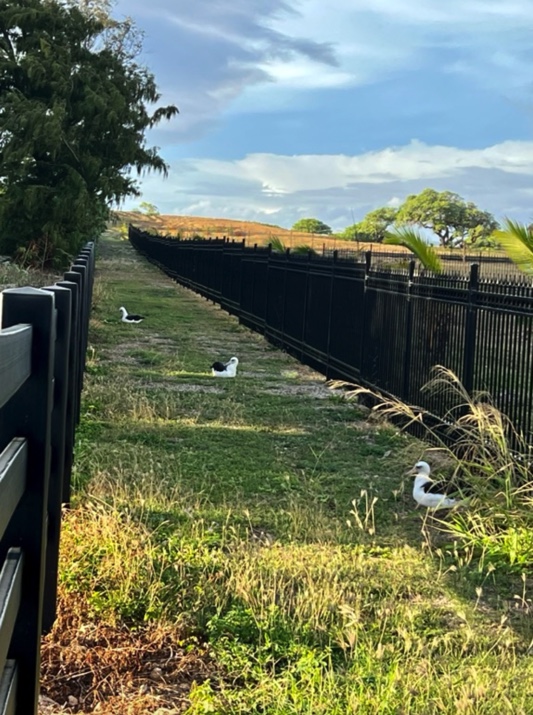
State House Rep. Sean Quinlan, who represents the area, sent Chang a similar letter on the same day.
While the fence is not considered to be in the Conservation District, and therefore, would seem to be out of the DLNR’s jurisdiction, some members of the public who frequent the area have suggested that it is and that the high wash of the waves reaches as far inland as the makai-most fence edge.
Less than a week after those letters were sent, a new group, the Mālama Marconi Coalition, sent a letter to the heads of the Honolulu Department of Planning and Permitting arguing that the fence should never have been allowed to be built.
The coalition is a network of community organizations and individuals concerned with the protection of Hawaiʻi’s cultural and historic resources, wildlife and native ecosystems, “particularly at the ‘Marconi’ properties and coastline between Turtle Bay Resort and the James Campbell National Wildlife Refuge.”
The coalition noted that the fence did not appear to be properly permitted when it was built in late 2022 and argued that it never should be permitted.
The fence directly interferes with the successful nesting of Laysan albatross, an indigenous species protected by the Migratory Bird Treaty Act that nests in the Kahuku Point/Marconi area between November and July each year, the coalition wrote.
It added, “As recently reported in articles in Civil Beat and Environment Hawaiʻi, numerous illegal activities on the Marconi properties are harming wildlife, historic resources, and the coastal environment. And, as you know, the landowners have sued the City in federal court, arguing that the rampant development on the property does not need a Special Area Management permit, which is a deeply flawed position. Protected historic resources have been demolished. Ecosystems for protected species have been bulldozed. ‘Fake’ farming that is actually residential development appears to be ongoing. We will address those issue in future letters.”
The coalition noted that the fence prevents albatross from walking underneath and “has large spikes on top causing a risk of entanglement from top to bottom.”
The group cited one example of the fence causing a failure of a nest in December 2022. The albatross parents were trapped on opposite sides of the fence.
“[B]oth adults were seen on multiple occasions frantically walking back and forth along the fence line trying to gain access to their nest, which was on the other (Turtle Bay) side of the newly constructed fence. The egg failed and a healthy albatross chick diedbecause the fence prevented the parents from properly incubating their egg,” the coalition stated, noting that just one year later, “[b]ystanders report that Hoʻokipa became horribly entangled in the fencewhile trying to flee from a man with a weedwhacker on Yue-Sai Kan’s property.”
“In addition to the death of the egg in 2022 and this death of Hoʻokipa in 2023, the fence regularly entraps other Laysan Albatross that land on Yue-Sai Kan’s lot. If there is not sufficient wind, the fence becomes an impassable barrier that prevents them from taking off safely,” the group added.
“In short, this fence has caused significant disruption, harm, and death to Laysan Albatross since it was built a year ago. This illegal fence falls under DPPʻs jurisdiction and DPP needs to take urgent enforcement action to fine the responsible landowner and remove the fence.”
The group noted that the DPP seemed to have opened an enforcement case in 2022 for the fence, as well as for illegal grading.
“However, no further DPP action appears to have been taken since the [Notice of Violation] was issued by the DPP inspector on January 7, 2022. A full year has passed – and it appears that, in that time, the landowner has used the gap in enforcement to finish illegally building this massive fence, which has caused major problems.”
The coalition asked that the DPP fully enforce its prior NOV “or issue a new more complete and robust one,” pursue fines starting in February 2022 related to the fence, and order that it be removed within 30 days.
The group also argued that the fence is not exempt from needing a building permit because it is more than 6 feet high in places and is in the VE (coastal high hazards area) and AE (flood fringe) flood zones. (Hawaiʻi Revised Statues exempt non-masonry, agricultural fences as high as ten feet from building permit requirements, so long as the county agency has determined that a building permit for the proposed structure “is not required for compliance with county, state, or federal floodplain management development standards, ordinances, codes, statutes, rules, or regulations pursuant to the National Flood Insurance Program requirements.”)
Finally, on January 18, the wildlife conservation non-profits Center for Biological Diversity and Conservation Council for Hawaiʻi joined Mālama Marconi Coalition and the KWA in sending a letter to Jerome Ford, assistant director of the U.S. Fish and Wildlife Service’s Migratory Bird program, requesting enforcement for the Migratory Bird Treaty Act for the intentional killing of Hoʻokipa, and to “to take action to address activities that have occurred on the Marconi Development that are causing repeated and continuous unauthorized take of protected migratory birds, in patent violation of the MBTA, as well as other incidents that potentially involve violations of the Endangered Species Act.”
The groups also recommended that the FWS issue a proposed rule to regulate the killing of migratory birds “to facilitate an effective and consistent enforcement system for developers.”
“[T]he Marconi Development is associated with a long list of violations that negatively affect protected species on the parcel. The developers and owners of the land have reportedly made a ‘Condominium Property Regime’ on the property yet have not received a required Shoreline Management Area permit for the construction, grubbing, and other activities that have occurred, including the construction of the iron fence in question. This same fence resulted in previous injuries and deaths of several migratory birds, including the Laysan albatross,” the groups wrote.
“As such, state and federal agencies and the property developers and owners of the Marconi Development have failed to take adequate steps to avoid, minimize, and mitigate take of migratory birds in violation of the MBTA,” they continued. Without FWS enforcement, the groups were concerned that activities on the Marconi property “will continue to contribute to harm to Laysan albatross and other migratory birds in violation of the MBTA.”
They urged the FWS to “issue promised regulations to provide guidelines for developers to avoid harm from occurring in the first place.”
“[W]hile various organizations and government agencies are working tirelessly to conserve Hawai‘i’s threatened and endangered bird species by engaging in such important activities as habitat restoration, captive breeding programs, and public education campaigns, they have also simply turned a blind eye to site-specific violations of both the MBTA and the ESA through direct killing of individual species via incidents like these,” they continued.
“Earlier this month, the Service withdrew much-needed draft migratory bird protection rules that the agency promised to propose two years ago. These rules are necessary to protect migratory birds,” they wrote.
In addition to asking for the enforcement actions, the groups suggested that the property owners be required to take immediate action to prevent and mitigate injuries and deaths of migratory birds.
An Early Warning
Months before the illegal coastal habitat clearing that occurred last October and the killing of Hoʻokipa and destruction of the historic site in December, Wayne and Tara Hu, owners of one of the units within the Marconi Point Condominiums allowed a farm dwelling, raised concerns that a lot of activity going on up there was just not right. Off-road vehicles were being allowed through the CPR gates so that they could run up and down the beach where protected monk seals and sea turtles are known to rest. Holiday dinners and other commercial events were being held in warehouses that are supposed to be used strictly for agricultural purposes.
On August 29, 2023, attorney Peter Lenhart, representing the Hus, sent a letter on their behalf to Makai Ranch president Jeremiah Henderson III, its chief operating officer Michael Danhour, and their attorneys at Damon Key Leong Kupchak and Hastert, demanding that several actions be taken to remedy what they say were illegal or improper actions in and around the CPR. Makai Ranch is the project’s developer.
Lenhart sent copies of that letter to the DPP, the state Historic Preservation Division, DOFAW, the state Department of Agriculture, the USDA, the FWS, and the Honolulu City Council member for the region, Matt Weyer.
The 52-page letter covers a wide range of issues. The Hus were clearly upset. They had paid a premium for one of the few lots that are allowed a farm dwelling in what began as a 26-unit agricultural CPR. They had undertaken costly archaeological studies and had waited years for a building permit. Meanwhile, they saw structures that resembled houses erected without any permits on less expensive lots where dwellings aren’t allowed. They then saw the city approve exemptions for those “barn” or “storage” structures, while septic systems are put in and lights are on inside them at night.
“The owners of units 12, 13, 14, and 15 are all in violation of [Revised Ordinances of Honolulu] Chapter 18. Units 12 and 15 do not have building permit applications with the DPP, and yet there are fully built structures already existing on those units. Units 13 and 14 have started building permit applications with DPP but no permits were issued to them. Units 13 and 14 are also in violation because the structures are not being used as agricultural or commercial structures. The Hus very clearly saw the structures being used as homes, and no reasonable person could argue that these homes are barns,” the letter states.
The Hus were also alarmed when the developer planted coconut trees on their lot without their permission, when they were locked out of certain common elements, when the boundaries of their lot were changed (again, without their permission), when they suspected that unpermitted septic tanks may have been allowed to be installed within the CPR, and when the density of the project had been increased from 26 to 32 units.
They also had major problems with the large agricultural warehouses that had been built directly across from their unit. They objected to the warehouses — constructed with a USDA-backed loan — being advertised and treated as an industrial park.
Not only were the CPR’s governing documents being violated, they argued, government regulations were being violated as well.
“The Hus want nothing more than to use and enjoy their Unit without any further changes to the Project and without any further interference by you. However, considering the changes you have already made, it does not seem possible for the Hus to continue to use and enjoy their Unit as they intended when they initially purchased. It is our wish to resolve this matter without the need for further legal action and we hope that further action will not be necessary,” Lenhart wrote.
The Hus demanded that the developer stop all of the actions that were “1) materially and adversely affecting owner’s enjoyment and use of their Unit, and 2) violating state and/or county laws.” They also demanded reimbursement for their time and expenses required to remove the coconut trees planted on their unit, as well as expenses incurred to be able to build a farm dwelling on their unit.
They gave a deadline of September 7 to respond. On October 25, Makai Ranch’s attorneys, representing two of Henderson’s other companies that own the units where the warehouses are built, filed a complaint against the Hus in 1st Circuit Court seeking a declaratory ruling that the warehouses may remain and that the companies are not required to remove the warehouses that have already been constructed and may continue with construction of the warehouses as intended.
The complaint also sought an injunction enjoining the Hus “from interfering with Plaintiffs’ contractual, business, and other relationships with Plaintiff RCA Trade Center’s lender and the government.”
The companies also wanted an award of compensatory, punitive, and other damages against the Hus, as well as attorneys’ fees.
“Defendants have knowledge of the USDA Loan and underlying contractual relationship, in light of the fact that they transmitted their Demand Letter to the USDA and questioned the use of federal funds for construction of the warehouses (although … the USDA has not actually provided any federal funding, only a guaranty).
“By transmitting their Demand Letter to the USDA and other governmental agencies, Defendants intended to purposefully interfere with the contractual relationship among Plaintiff RCA Trade Center, its lender, and the federal government. …
“The damages incurred by Plaintiffs include without limitation, additional costs associated with responding to and mitigating the effects of Defendants’ untruthful allegations, reassuring Plaintiff RCA Trade Center’s lender, and otherwise confirming the propriety of plaintiffs’ past and anticipated construction activities, both through the declaratory rulings sought in this lawsuit and otherwise.
“Defendants’ actions were made with the intent and malice to harm Plaintiffs’ contractual and business relationships without legal justification,” the complaint states.
In their January 17 reply, the Hus countered, “By filing the complaint, Plaintiffs are seeking to utilize the court to silence Defendants in their efforts to seek governmental review, redress, and assistance in the investigation of possible violations of Federal, State, and County laws, rules and regulations, and is in violation of Defendants’ First Amendment right to petition the government. Plaintiffs’ action in filing the Complaint is in violation of Defendants’ right under the First Amendment to the Constitution of the United States of America and their right under Article I, Section 4 of the Constitution of the State of Hawaiʻi to petition the government (which is often referred to as a SLAPP action i.e., a Strategic Lawsuit Against Public Participation) and to attempt to silence and intimidate Defendants in their efforts to cause government agencies to address issues of public import and public interest. …
“As discussed briefly above, Defendants’ August 29th letter was an exercise of Defendants’ rights to petition the government as to issues of public interest and concern relating to the development of the more than 90 acres of agriculture and preservation zoned land that constitute the Marconi Point Condominiums project on the North Shore in Kahuku, Oʻahu. Plaintiffs’ action in filing the Complaint is in violation of the Hawaiʻi Public Expression Protection Act codified in Hawaiʻi Revised Statutes Chapter 634G.”
They asked that the complaint be dismissed and sanctions entered for violating their First Amendment rights, violating Hawaiʻi’s anti-SLAPP law, and Rule 11 of Hawaiʻi Rules of Civil Procedure. They also asked to be awarded further relief “as is reasonable, just and appropriate, or as may be determined by the Court.”
The court set a mandatory settlement conference date of April 10, 2025. Should the parties fail to reach a settlement, a trial could begin the following June.
Certificates of Occupancy
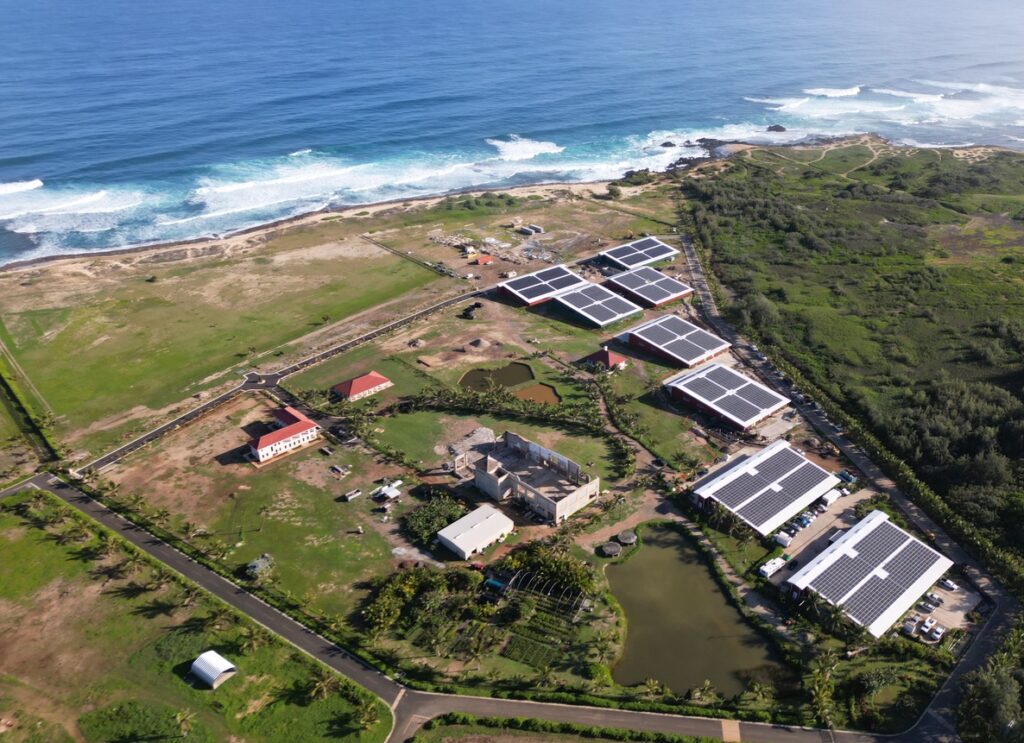
The future of the agricultural warehouses is one of the many things in limbo at Marconi Point. In addition to whatever the Hus’ letter stirred up, and the ongoing lawsuit over whether or not an SMA permit is required to complete them, there’s another complication.
For the warehouses to ever be issued Certificates of Occupancy by the city, a final interim stabilization plan (ISP) ensuring that all resources contributing to the Marconi Wireless Telegraph Station historic district are secured and protected must be completed. That’s according to a 2021 Memorandum of Agreement with the USDA Rural Business Cooperative Service, the Advisory Council on Historic Preservation, the state Historic Preservation Division, RCA Trade Center, North Avenue Capital (the lender), and the Henderson-owned Marconi Hotel and Marconi Station.
The MOA was required as part of the USDA-backed loan. Not only has no ISP been completed by the deadline set forth in the MOA, Makai Ranch sold the land where the historic buildings stand and in May 2022 appeared to have transferred as well the Henderson’s companies’ obligations to comply with the MOA.
A partial transfer of rights to Greystone HI Investments, LLC, indicates that Makai Ranch was transferring the “rights and obligations to comply with the Memorandum of Agreement … but only with respect to the Historical Units and the Limited Common Elements appurtenant to the Historical Units, provided, however, that the exercise of these rights shall be limited to the Historical Units and to the Limited Common elements appurtenant to the Historical Units, unless otherwise agreed to by the Assignor.”
Not only did Greystone not follow through with the MOA requirements, work it had done on one of the historic buildings resulted in its partial destruction. The state Historic Preservation Division is investigating the matter. The DPP also issued notices of violation for the unauthorized work.
The DPP did not respond by press time to questions about whether the MOA was binding on the city or if the city planned to make issuance of the Certificates of Occupancy contingent on the completion of the ISP (which may be moot at this point).
Clearing Clarification
How or when the mess involving the violations within the historic district and the agricultural warehouses will be resolved is unclear.
The violations regarding the unauthorized coastal clearing – which, like the work on the historic building, appears to have been done at the direction of Greystone’s owner, Sushil Garg – are also awaiting resolution.
The DLNR is expected to bring its recommendations to the Board of Land and Natural Resources early this year. But it’s unclear who the department will identify as the responsible party.
Normally, violation cases are brought against the landowner. So in the case of the Marconi Point CPR, the DLNR issued a Conservation District violation notice to all of the CPR unit owners. That included, among 14 others, the Hus.
In a November 9 letter to DLNR director and Land Board chair Dawn Chang, Lenhart wanted to make sure she knew that the Hus — and many of the other unit owners — were not responsible for any violations that may have occurred within the CPR.
He noted that the Hus’ August letter had brought to the DLNR’s attention “serious issues involving the Developer of the Marconi Point Condominiums Project and many of the same issues that you now set forth.”
He pointed out that the CPR’s declaration included a “Developer Control Period” that places the developer, Makai Ranch, in control of the project until it’s turned over to an association of unit owners.
“To date, the Developer has not turned over control. At present, there is no Board of Directors or Officers of the Association comprised of Unit owners. The Developer, Makai Ranch, LLC, maintains entire control over the Project,” he stated, attaching an October 30, 2023, letter from Makai Ranch to the Hus — 11 days after a DLNR press release announcing the notice of alleged violations — “indicating its intent to turn control of the Marconi Point Condominium Association over to the Unit owners December 1, 2023, with a meeting of Unit owners to follow to elect a Board of Directors. That letter demonstrates that the current unit owners are not in ‘control’ of the Project.”
“This is relevant as your letter does not even identify Makai Ranch, LLC, the entity responsible for activities occurring in the Condominium Project including enforcement of illegal actions taking place on unit owner’s lands. Most of the unit owners identified in your letter have no authority or power to take any action to address or mitigate any of the matters addressed in your letter.”
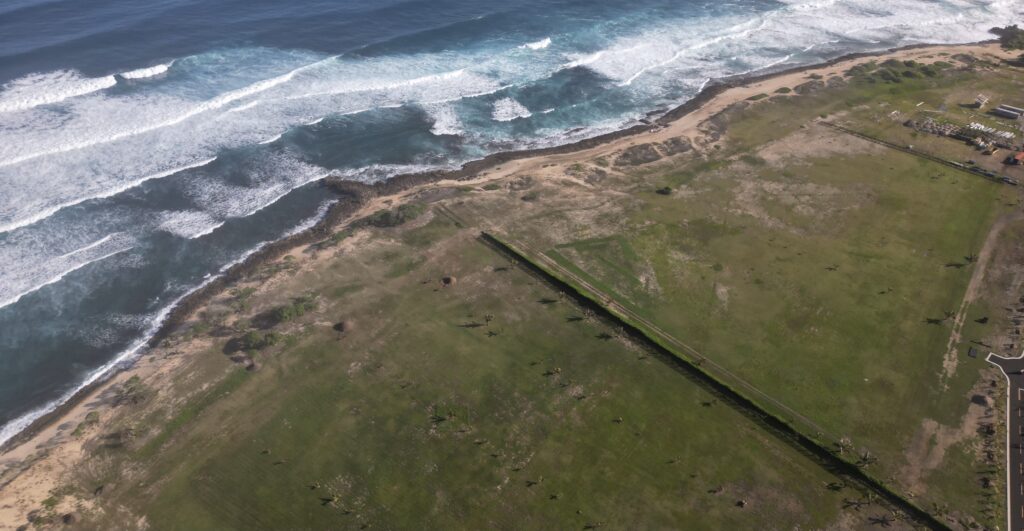
— Teresa Dawson

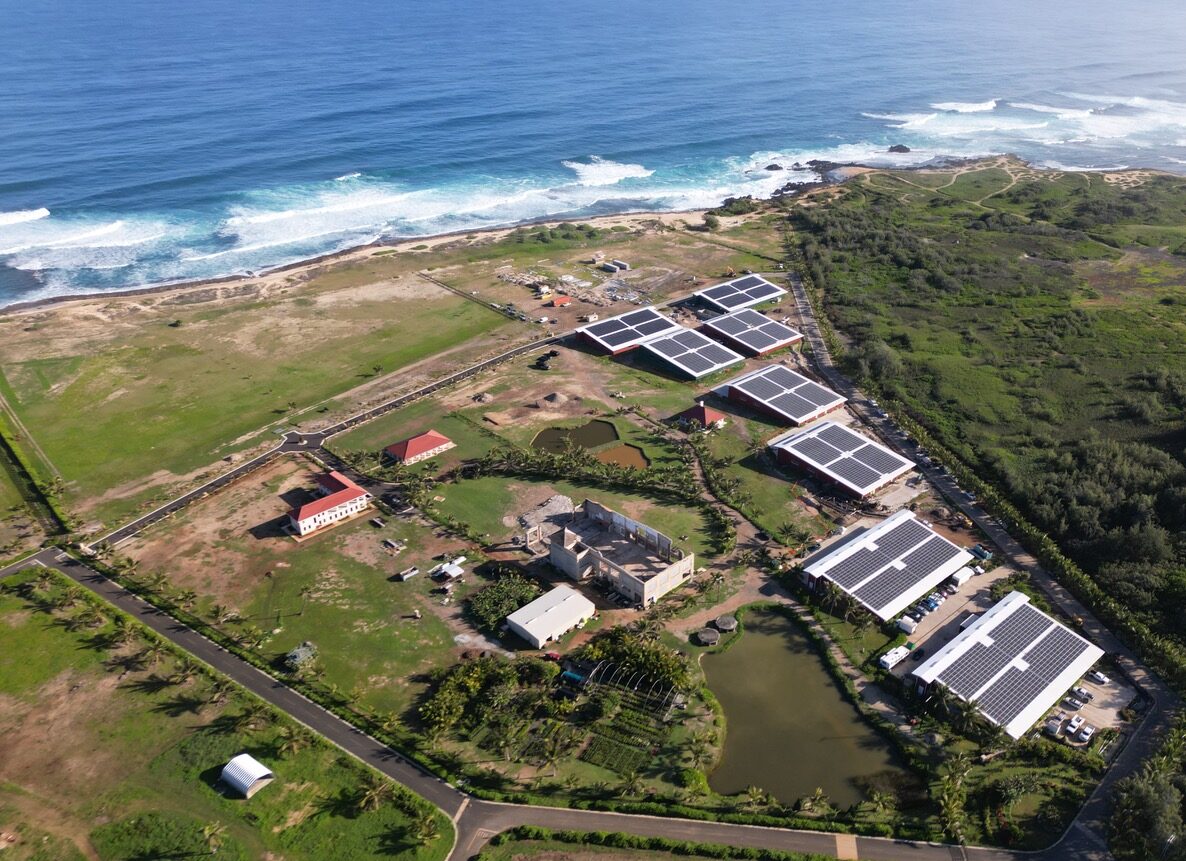
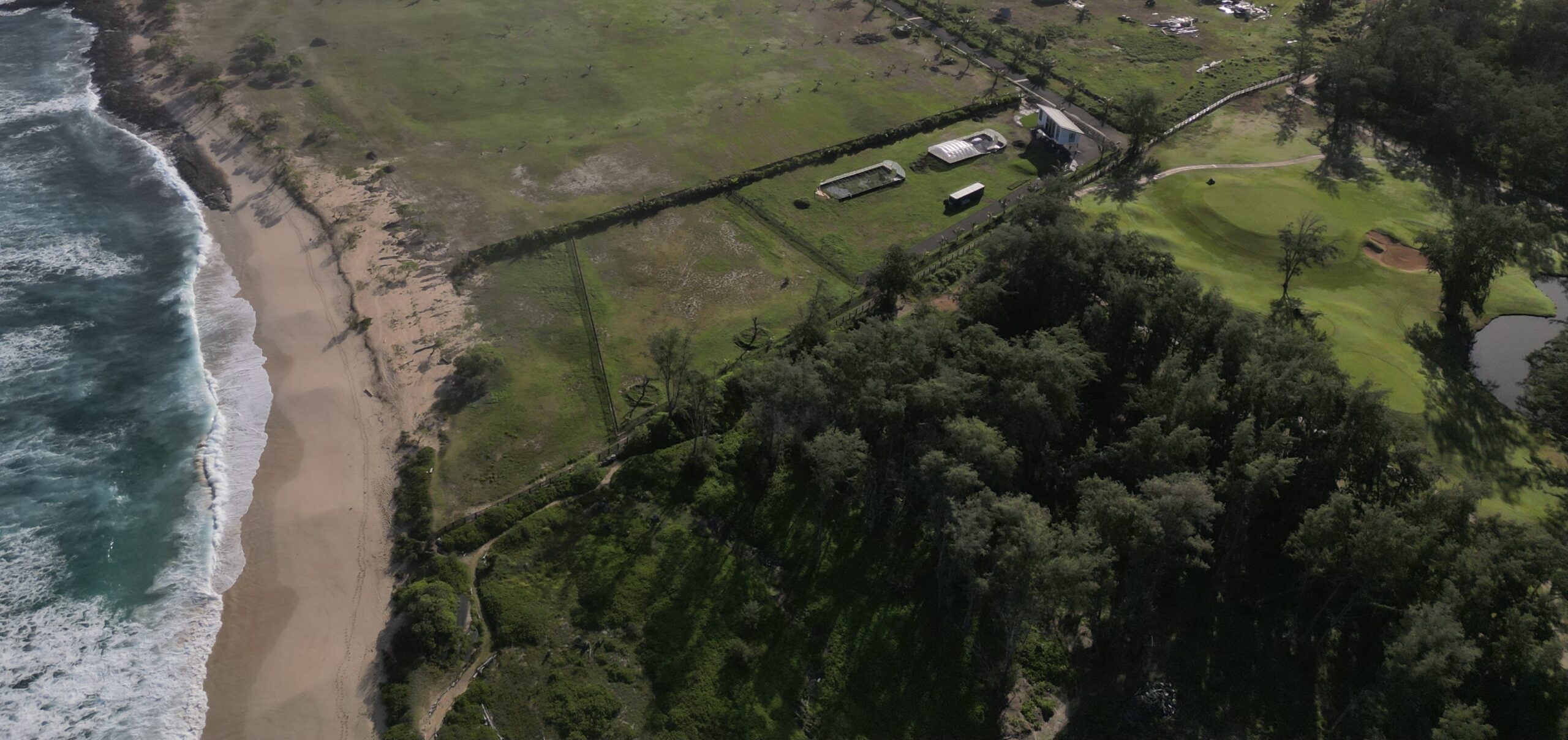
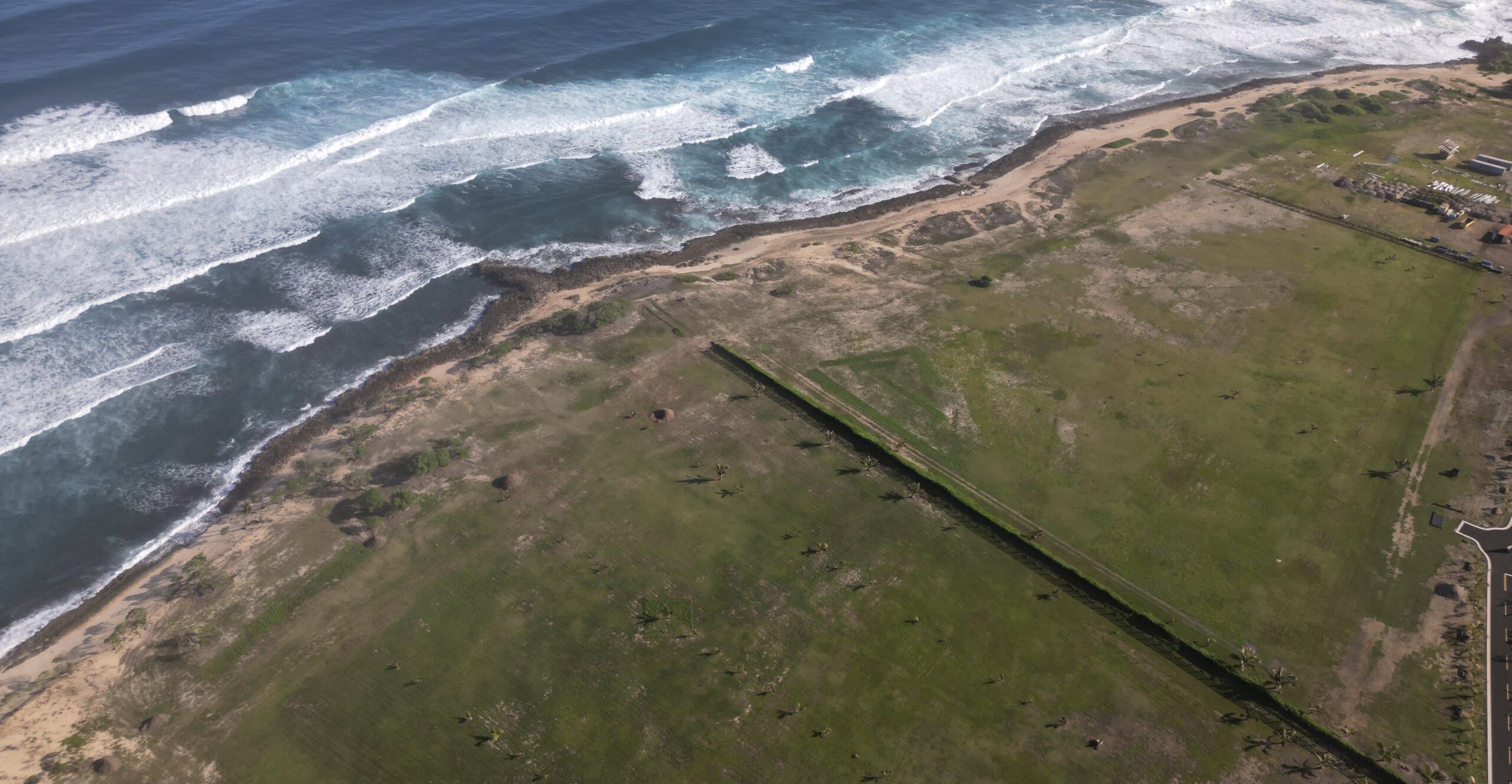
John Mahi'ai Cummings III
It is disheartening that such egregious environmental and historical destruction was allowed to proceed unchecked, devoid of regulation or oversight. The impact on flora and fauna, including the deaths of Layasan Albatross and the destruction of their nesting areas, demands accountability. Our city, state, and federal agencies responsible for safeguarding these lands and their wildlife must prioritize rigorous enforcement and fair adjudication of these actions and those responsible.
Far too often, individuals and profit-driven businesses perpetrate such egregious acts driven by greed, receiving minimal fines and punishments. This leniency encourages others to follow a similarly deplorable path, knowing they can simply pay their way out. Marconi Point must serve as a stern example: breaking the law, destroying native lands, and harming protected species will result in severe financial penalties and, where applicable, significant prison sentences.
It is imperative that justice is served decisively to deter future disregard for environmental protections and wildlife conservation.